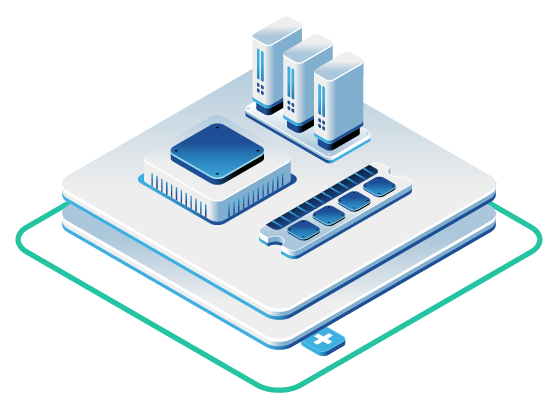In this article
- What are APIs and Integrations?
- OpenMetal + OpenStack: A Powerful Combination
- The Building Blocks of Your Cloud (and How to Automate Them)
- OpenMetal’s Automation Tools
- What You Gain With Automation
- Wrapping Up: Why Build Your Cloud With OpenStack on OpenMetal?
- Get Started on a Hosted Private Cloud powered by OpenStack
Managing your cloud can be a real juggling act. There’s a lot to keep track of, and repetitive tasks eat up valuable time. OpenMetal offers powerful automation tools built on the strong foundation of OpenStack to help make things more streamlined. Through OpenStack’s different services, plus OpenMetal’s APIs and integration tools, you can make managing your cloud easier plus free up your team’s time.
What are APIs and Integrations?
First, a quick definition of the key things we’re discussing for anyone unfamiliar:
- APIs (Application Programming Interfaces): Think of APIs as messengers between different software programs. OpenMetal’s APIs let you talk to your cloud infrastructure programmatically, so you can automate things like setting up new servers, configuring networks, and managing resources without clicking through endless menus.
- Integrations: These are connections between OpenMetal and other tools you already use. They automate the flow of information and actions between those systems, making your workflows smoother.
OpenMetal + OpenStack: A Powerful Combination
OpenMetal gives you easy access to the power of OpenStack, a leading open source cloud platform. Ours is also the first and only platform that lets you spin up a new production-ready OpenStack cloud in under a minute. This means you get a ton of flexibility and control, plus the ability to automate and speed up just about everything.
Here’s just a brief look at some of the possibilities:
- Store Anything with S3-Compatible Object Storage: OpenMetal uses OpenStack Swift for object storage, and it’s fully compatible with the Amazon S3 API. This is a big deal because it means you can use familiar tools like S3cmd, the AWS CLI, or Rclone to manage your storage. Need to automate backups of your virtual machines? You can do that easily using these tools, and we’ve got guides to show you how.
- Control Your Cloud with Code: Using the OpenStack command-line client (openstackclient) through OpenMetal’s APIs, you can automate all sorts of things. Think spinning up new virtual machines, launching pre-built images from OpenStack Glance (like ready-to-go operating systems), and setting up your network with OpenStack Neutron. It’s like having a remote control for your entire cloud.
- Smart Load Balancing: OpenMetal uses Octavia, OpenStack’s load balancer. This lets you automatically distribute traffic across your servers, keeping your applications running smoothly even during peak times. And because it’s part of OpenStack, you can automate its setup and configuration right along with the rest of your infrastructure. Read about how to create a load balancer in our guide.
The Building Blocks of Your Cloud (and How to Automate Them)
OpenStack is made up of different plug and play components called services that handle various parts of your cloud, and OpenMetal gives you the tools to automate interactions with each of them. Here are a few ways how:
![]()
Keystone (Automated Identity and Access Management)
Keystone isn’t just about security; it’s also about automating user management. Through APIs, you can automate tasks like creating new users, assigning roles, and managing permissions.
This is especially helpful for large teams or when integrating with other identity management systems. Imagine automatically provisioning access for new employees to the resources they need, right when they join the team.
Here’s our guide on how to implement robe-based access control in your OpenStack cloud. You can even integrate Keystone with other tools your team may already know and love, like Active Directory for user management.
Swift (Automated Object Storage Management)
Swift‘s S3 compatibility opens up a world of automation for object storage. You can automate backups, data replication, and even lifecycle management of your data.
For example, you could set up automated scripts to move older, less frequently accessed data to cheaper storage tiers or automatically delete data after a certain period. This helps optimize costs and keep your storage organized.
Using tools like Rclone, you can automate synchronization of data between different storage locations or even between your local machine and your OpenMetal cloud. It’s also quite simple to use Swift as the backend for Terraform.
Neutron (Automated Network Configuration)
Neutron‘s APIs allow you to automate the creation and management of your network infrastructure. This includes setting up virtual networks, subnets, routers, firewalls, and load balancers.
This is a huge time-saver when deploying complex applications that require specific network configurations. You can define your entire network setup in code and deploy it automatically, ensuring consistency and reducing the risk of manual errors. Think automated network provisioning for development, testing, and production environments.

Glance (Automated Image Management and Deployment)
Glance lets you automate the entire image lifecycle. You can automate the creation of new images, upload them to Glance, and then use those images to automatically deploy new virtual machines.
This is helpful for automating application deployments and ensuring consistent environments across your infrastructure. For example, you can automatically build and deploy new application versions to test environments directly from your CI/CD pipeline.
You can also enable TRIM support in Glance to further automate the management and optimization of your image storage space.

Heat (Automated Orchestration)
Heat is the muscle behind infrastructure as code (IaC) in OpenStack. It lets you define your entire cloud infrastructure in code, including resources from various OpenStack services like Nova (compute), Neutron (networking), and Cinder (block storage).
Through OpenMetal’s APIs, you can automate the deployment and management of your infrastructure using tools like Heat templates. Imagine writing a single template that defines your entire application environment, including servers, networks, security groups, and storage. With Heat and OpenMetal’s automation, you can deploy this entire environment with a single command, saving tons of time and ensuring consistency across deployments.
OpenMetal’s Automation Tools
Here are some other ideas on using OpenMetal’s APIs and integrations to automate your cloud:
Automatic Setup
Instead of manually configuring each new server, you can use the API to spin up entire environments with a few lines of code. This saves a great deal of time and reduces the risk of errors. Imagine setting up a complete testing environment in minutes.
Infrastructure as Code (IaC)
Tools like Terraform and Ansible let you define your infrastructure in code. OpenMetal’s APIs work hand in hand with these tools, so you can version control your infrastructure and deploy it consistently every time.
Check out how to launch an OpenStack instance automatically with Terraform. Should you want to make a change to an OpenStack service’s configuration, add a new OpenStack service, or even repair your OpenStack cluster, you can do so using Kolla Ansible.
Automated Monitoring
Connect OpenMetal to your monitoring tools to get automatic alerts when something goes wrong. This helps you catch problems early and keep your systems running smoothly.
We’ve integrated Datadog within our OpenMetal Central platform. Datadog brings together end-to-end traces, metrics, and logs to make applications, infrastructure, and third-party services entirely observable. If you’re using Datadog with us, check out how to create a custom dashboard to monitor your cloud’s physical resource usage.
Smooth Integration With Your Workflows
Connect OpenMetal to your development and deployment pipelines to automate testing and releases. This speeds up your development cycle and gets new features out the door faster.
Custom Automation
You can create your own custom automation workflows to handle certain tasks and processes unique to your business. Or, send important data to other platforms you use to report on things like system status or user activity. The flexible APIs give you the power to automate almost anything.
What You Gain With Automation
- More Time: Automate the boring stuff and let your team focus on more strategic (and interesting) projects.
- Lower Costs: Use your resources more efficiently and reduce the need for manual work.
- Greater Reliability: Eliminate human error and ensure consistent deployments.
- Faster Releases: Get new features and updates to your users quicker.
- More Flexibility: Adapt to changing needs quickly and easily.
A Real-World Example
Imagine you’re launching a new web application. With OpenMetal’s APIs and Terraform, you could automate the whole setup:
- A Terraform script describes all the necessary infrastructure: servers, networking, load balancers, etc.
- Terraform uses OpenMetal’s APIs to automatically create everything.
- Your application is deployed onto the new infrastructure.
- Everything happens automatically, saving you hours of manual work. Plus, you don’t have to worry about anything being set up incorrectly once you’ve validated your automation process!
Wrapping Up: Why Build Your Cloud With OpenStack on OpenMetal?
- Automation Powerhouse: Automate just about everything in your cloud.
- Simpler Management: Spend less time on repetitive tasks and more time on what matters.
- Open Source Advantage: Get the flexibility, cost benefits, and freedom of open source.
- Works with Your Existing Tools: Use the tools you already know and love.
- Scalable and Secure: Build a cloud that can grow with your business and keep your data safe.
OpenMetal gives you a powerful and easy way to use OpenStack, a historically complex platform now made accessible to anyone. By combining OpenStack’s capabilities and services with OpenMetal’s automation tools, you can build your own private cloud that’s efficient, scalable, and easy to manage.
Read More on the OpenMetal Blog



































